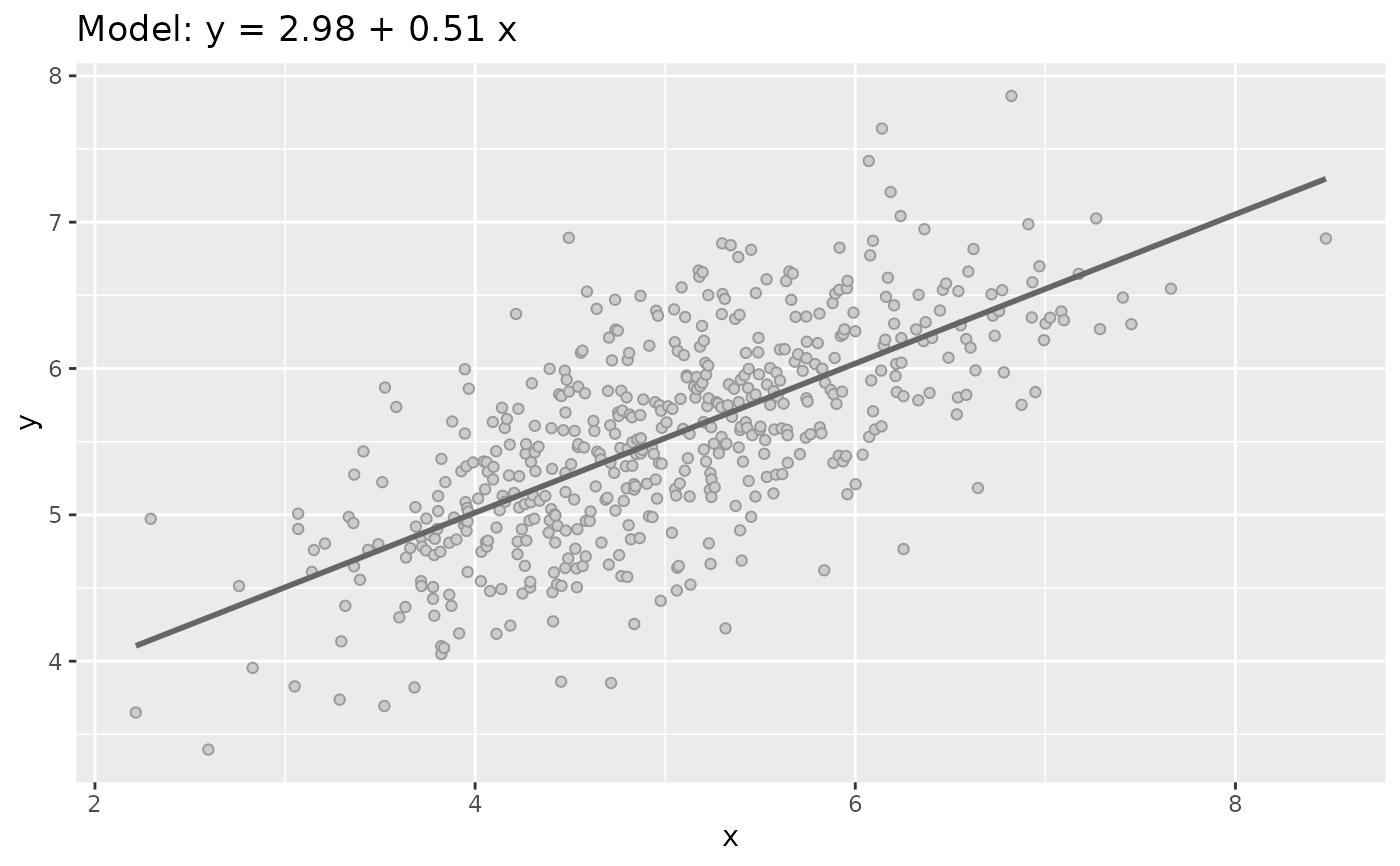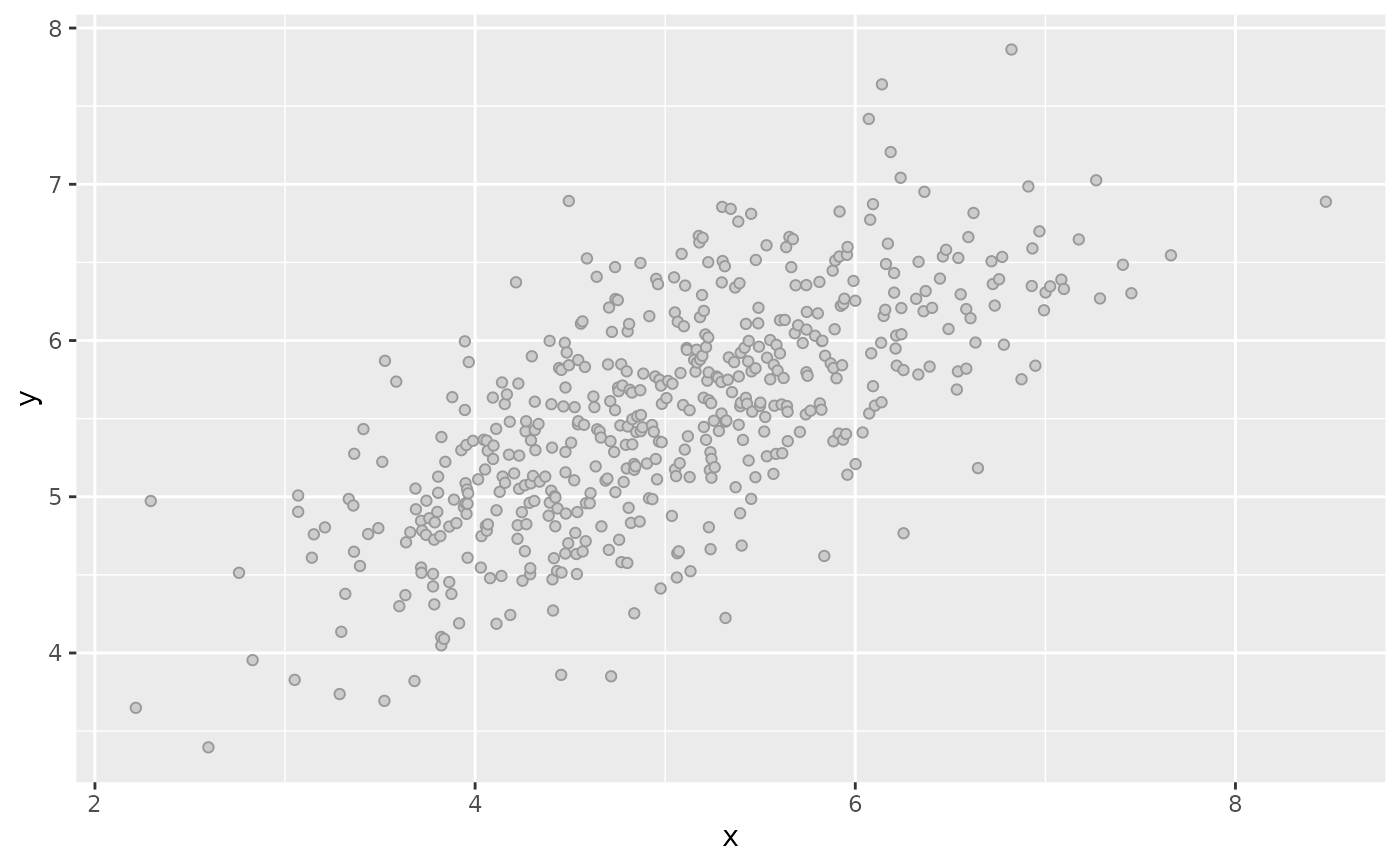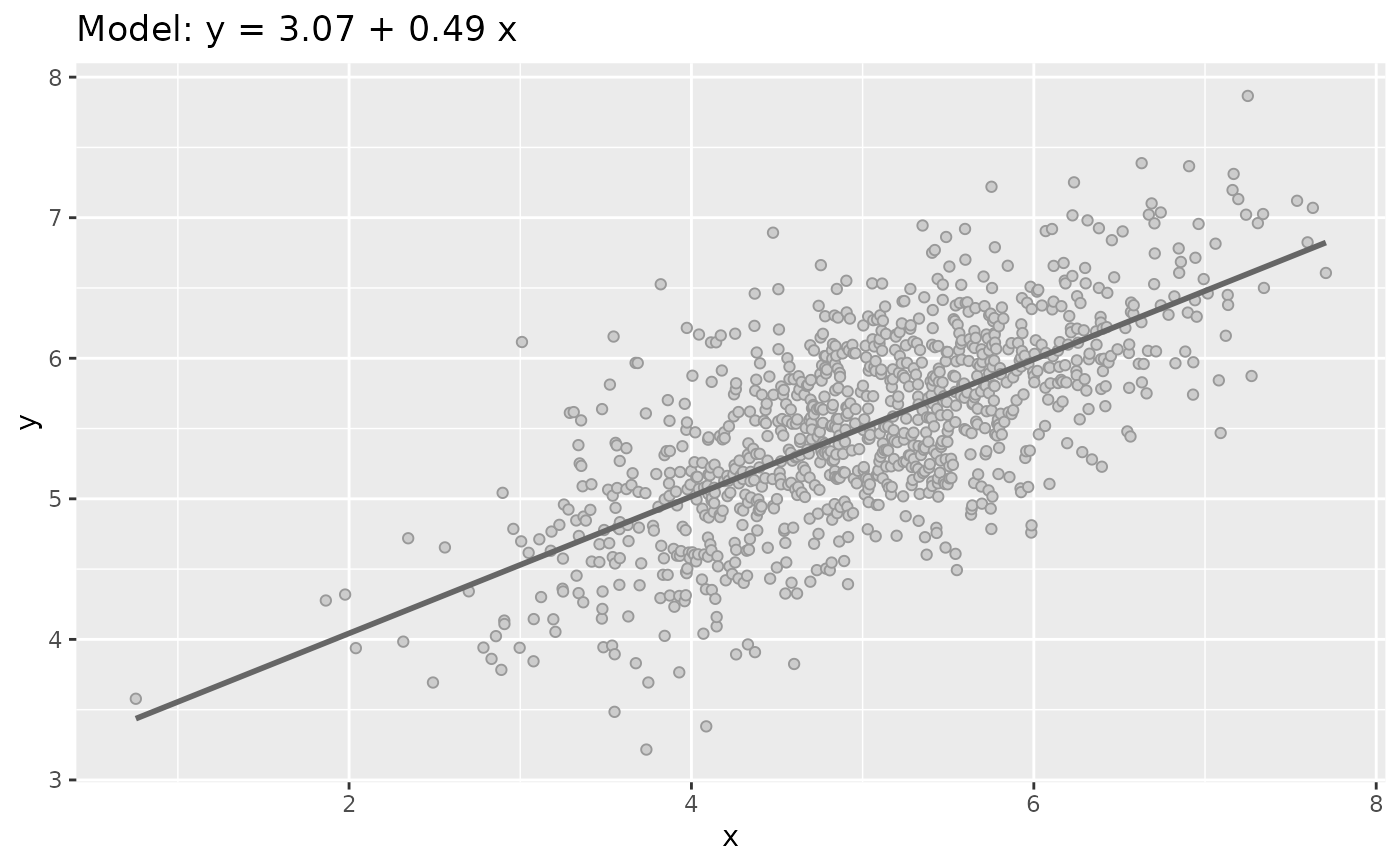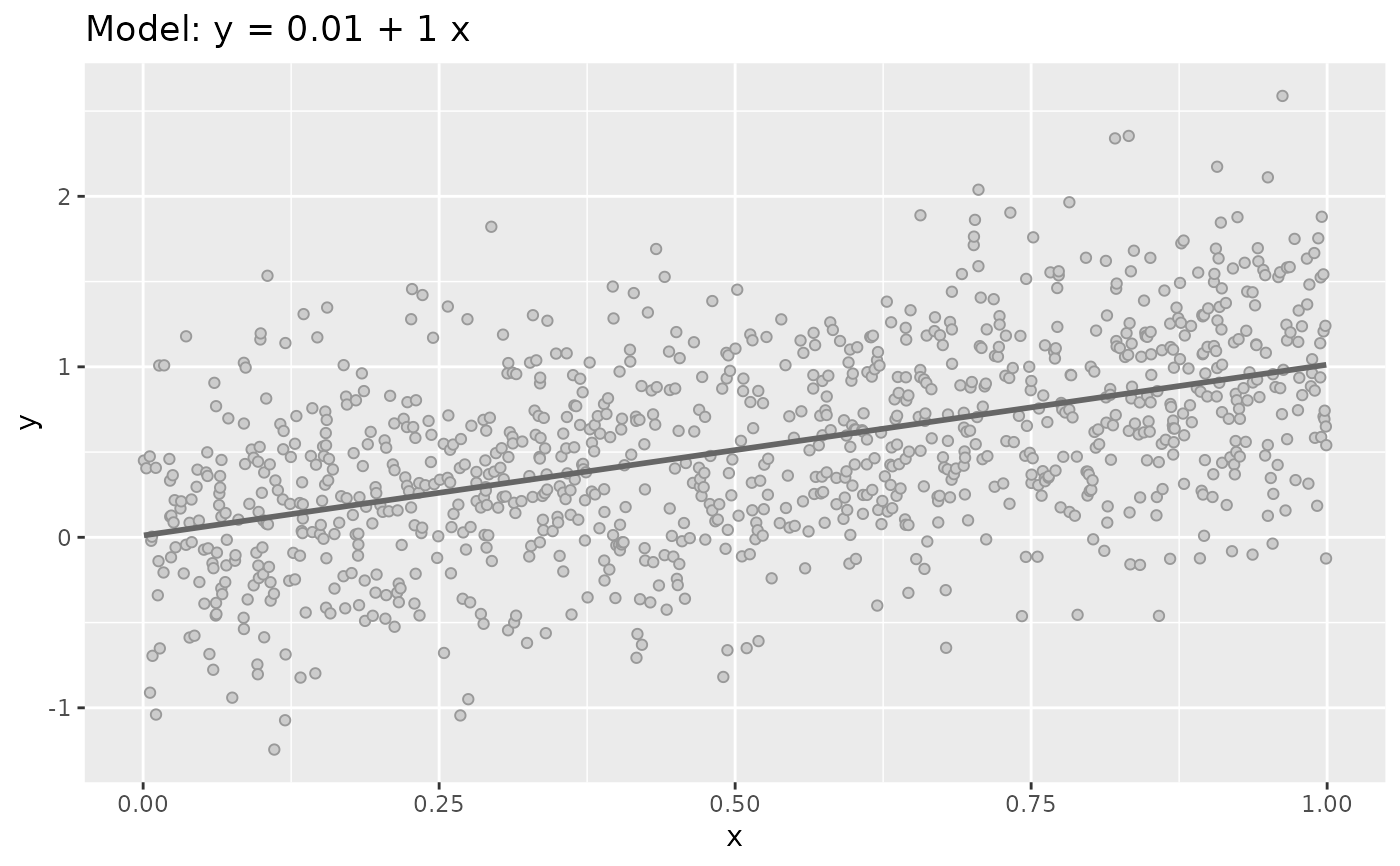This function generate a data set Type 1 creating first a x a random vector
then apply a linear transformation using beta0 and beta1 and finally
adding a normal distributed noise using error_sd creating y values.
Arguments
- n
Number of observations
- beta0
beta0, default value: 3,
- beta1
beta1, default value: 0.5
- x_dist
A random number generation function. Default is a
rnormwith mean 5 and sd 1.- error_dist
A random number generation function. Default is a
rnormwith mean 0 and sd 0.5.
Details
This is the typical first example when regression analysis is taught.
Internally this is the same procedure of sim_xy.
Examples
df <- sim_quasianscombe_set_1()
df
#> # A tibble: 500 × 2
#> x y
#> <dbl> <dbl>
#> 1 2.22 3.65
#> 2 2.29 4.97
#> 3 2.60 3.40
#> 4 2.76 4.51
#> 5 2.83 3.95
#> 6 3.05 3.83
#> 7 3.07 5.01
#> 8 3.07 4.90
#> 9 3.14 4.61
#> 10 3.15 4.76
#> # … with 490 more rows
plot(df)
 plot(df, add_lm = FALSE)
plot(df, add_lm = FALSE)
 plot(sim_quasianscombe_set_1(n = 1000))
plot(sim_quasianscombe_set_1(n = 1000))
 plot(sim_quasianscombe_set_1(n = 1000, beta0 = 0, beta1 = 1, x_dist = runif))
plot(sim_quasianscombe_set_1(n = 1000, beta0 = 0, beta1 = 1, x_dist = runif))
